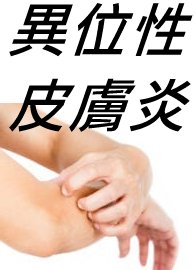| common name | Common Bletilla Pseudobulb |
This product is the tuber of the perennial herbaceous plant of the Orchidaceae family, common bletilla pseudobulb (Bletilla striata (Thunb.) Reichb.f.). It is mainly produced in Sichuan, Guizhou, Hunan, Hubei, Zhejiang, and other regions. It is harvested in the summer and autumn seasons. After removing the residual stems and fibrous roots, it is washed, boiled in boiling water until there is no white core, the outer skin is removed, and then dried in the sun. It is sliced and used raw.
bubble_chart Properties and Meridians
Bitter, sweet and astrient, cold. Act on lung, stomach and liver meridians.
Converge to stop bleeding, resolve swelling to promote tissue regeneration.
- is used for internal and external hemorrhagic syndromes such as hemoptysis, epistaxis, hematemesis, bloody stool, and traumatic bleeding. This product is sticky and astringent, making it an essential medicine for astringent hemostasis. It has excellent hemostatic effects. For treating various internal hemorrhages, it can be ground into powder alone and taken with sticky rice soup, such as the formula Unique Saint Powder; clinically, it is often used together with Sanqi powder, which not only enhances the hemostatic effect but also prevents static blood from stagnating. For treating hemoptysis due to damaged lung collaterals, if there is lung yin deficiency, it is combined with loquat leaf, Donkey-hide Gelatin, etc., such as the "Zhengzhi Yaojue" common bletilla pseudobulb loquat pill; if there is lung qi deficiency, it is combined with Ginseng, Astragalus Root, etc., to tonify qi and control blood. For treating hematemesis and bloody stool due to gastric bleeding, it is often combined with cuttlebone sepium, known as Wu Ji San. Modern clinical practice uses this product to treat upper digestive tract bleeding and pulmonary subcutaneous node cavity bleeding. It not only has excellent hemostatic effects but also promotes ulcer healing, absorption of subcutaneous node lesions, cavity closure, and conversion of sputum bacteria to negative. For treating traumatic bleeding, it can be ground into powder and applied externally.
- It is used for abscesses, burns, skin rhagades, anal fissures, etc. This product can resolve swelling and promote tissue regeneration. For treating sores and ulcers, in the early stages, it can subdue swelling and dissipate bind, often combined with Lonicera, Gleditisia Spine, Snakegourd Root, etc., such as the Neixiao San in "Waike Zhengzong"; if the abscess has ulcerated and does not heal for a long time, it can promote tissue regeneration and astringe sores, often ground into powder for external use. For treating burns, it can be combined with Giant Knotweed to make a medicinal membrane for external use, which can reduce inflammation, relieve pain, and promote tissue regeneration and scab formation. For treating skin rhagades and anal fissures, it can be ground into powder and mixed with Sesame Oil for topical application, promoting the healing of fissures.
- Benjing: "For treating abscesses, malignant sores, and necrotic ulcers, damage to yin, dead tissue, and pathogenic qi in the stomach."
- Bencao Huiyan: "Common Bletilla pseudobulb is a medicine that astringes qi, resolves phlegm, stops bleeding, and disperses abscesses. This medicine is extremely sticky and astringent in nature, with a bitter taste and cold qi, and is particularly effective in entering the lung meridian. For lung damage caused by heat stagnation and blood stasis, grinding this into a powder and taking it daily can firm and astringe the lungs, sealing and repairing the damage. It can disperse abscesses, expel decay, remove dead tissue, and cleanse pus and blood, with the wonderful effect of expelling the old and generating the new."
Decoct and take 3-10g; powder, take 2-5g each time. Apply externally as needed.
bubble_chart Cautions and Contraindications
Anti Aconite Mother Root.
bubble_chart Modern Pharmacology
This product contains 56.75% to 60.15% mucilage, which includes various polysaccharides, as well as volatile oils and starch. It has the effect of shortening coagulation time and inhibiting fibrinolysis, providing excellent local hemostatic effects, which are related to the mucilage content, as it can form artificial thrombi to stop bleeding. In vitro tests have shown significant inhibitory effects on subcutaneous node bacilli.
bubble_chart Other Related Items






